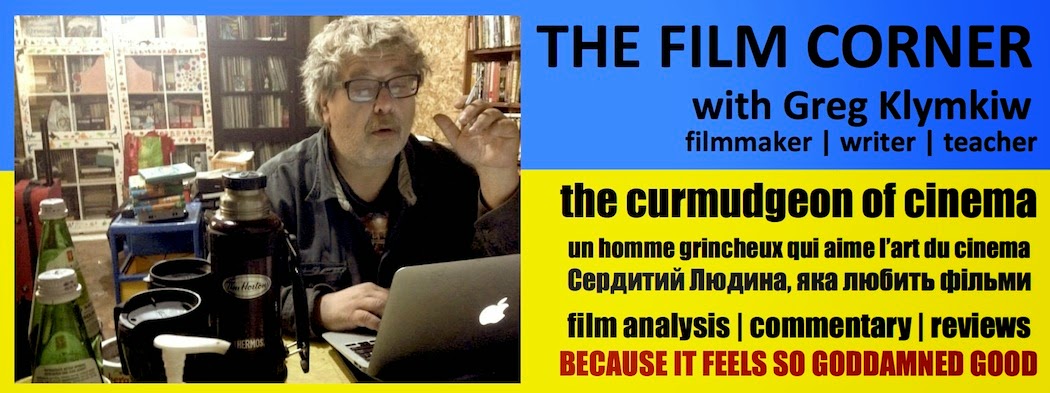The Buttercup Chain (1970) *1/2
Dir. Robert Ellis Miller
Starring: Hywel Bennett, Leigh Taylor-Young, Jane Asher, Sven-Bertil Taube
Review By Greg Klymkiw
This dull, idiotic, pretentious bit of soft-core is not especially sexy and lacks even the tiniest shred of entertainment value, in spite of its more ludicrous elements of prurient excess. It is, however, one of the most sumptuously photographed bad movies I have ever seen.
Shot by the brilliant Douglas Slocombe, one is treated to impeccable compositions, delicate interior lighting and sun-drenched location photography of the highest order. And of course, whenever the supple flesh of the attractive leads is bared, Slocombe captures the puff pastry of the ladies and the buff brawn of the gentlemen with the eye of a pornographer extraordinaire.
Not that this should come as a surprise. Slocombe, a multi-award-winning-and-nominated cinematographer had, by the time he worked on this film, been making dazzling images for twenty-five years. His early career in Britain included lensing some of the great Ealing Pictures including the classic chiller Dead of Night, the black comedy Kind Hearts and Coronets, Alexander Mackendrick’s wry satire The Man in the White Suit, the quiet, delicate and almost elegiac The Smallest Show On Earth and the all-out hilarity of The Titfield Thunderbolt.
Throughout the 60s, Slocombe created indelible images on a variety of classic films from all genres. He gave us the lurid glory of the sickening, terrifying Circus of Horrors, the hip, groovily-dappled colours and endless heart-stopping shots of Raquel Welch in Fathom, the glory of the intimate historical epic The Lion in Winter, Roman Polanski’s gorgeously, insanely, expressionistic The Fearless Vampire Killers, Peter Collinson’s Euro-trashy heist thriller The Italian Job and among many others, the subtly darkening black and white palette of Harold Pinter-Joseph Losey’s The Servant. In the same year The Buttercup Chain was made and released, Slocombe also shot Ken Russell’s phantasmagorical biopic of Tchaikovsky, The Music Lovers a cinematographer-director match made in heaven.
Of course, any of the above-named titles, should probably not even be mentioned on the same page as The Buttercup Chain, but alas, Slocombe was also enough of a pragmatic artist that he also took jobs that were just that – jobs. Not that money was the only aim in shooting this, but I suspect he was attracted to the stunning and wide variety of gorgeous European locations and the prospect of photographing a bevy of babes and hunks against said backdrops.
And just what, pray tell, is a “Buttercup Chain”?
Well, aside from being one of the least entertaining bad movies ever made, it appears to have something to do with the two lead characters and their childhood obsession with buttercups and how this, by extension, transmogrifies into a summer of carnal delight with everyone but each other in order to avoid the hint of incest that lingers over their desire for each other.
“Say, what?” you say!!!
France (the broodingly beautiful and ever-so-slightly mincing Hywel Bennett) and Margaret (jaw-droppingly ravishing model Jane Asher) are cousins. Their respective mothers are twin sisters. From childhood, they are deeply in love – the cousins, that is: not the twin sisters. As adults, they give each other lots of hugs and pecks, but never consummate their fleshly desires for each other. Instead, France desires to “pimp” (the word – I kid you not! – that he actually uses) Margaret out to as many lovers as possible so he can experience, from afar, the joy she will receive from every other man, but himself. For her part, Margaret also wants France to get some lovin’, so she encourages him to bed down the luscious Manny (that scrumptious morsel of big-screen 70s desire Leigh Taylor-Young). France chooses the swarthy Swede Fred (stiff-jawed and bulgingly endowed salami-meister Sven Bertil-Taube) to lay pipe within his beloved.
We, the audience, get to sit back, take our shoes off, apply the palm lubricant of choice and voyeuristically participate in this oh-so-sexy romp through the most exquisite European vacation spots imaginable as our two attractive couples… couple.
Alas, I feel I have made this cinematic equivalent to dog-shit-splattered-sidewalks sound far too watchable, if not downright compelling. It’s not. The dialogue is moronic, the performances wooden and Robert Ellis Miller’s direction is utterly pallid.
Miller’s poor work is not surprising. Essentially a camera-jockey (television director), he lucked out with one big screen picture, The Heart is a Lonely Hunter – thanks mainly to a fine cast and lovely source material. Here, he has a quartet of incompetent actors and high-mindedly boneheaded source material.
There is, however, Slocombe’s gorgeous cinematography, but as mentioned above, a myriad of good and sometimes great movies already existed prior to this film and benefited from his magnificent eye. In fact, AFTER shooting The Buttercup Chain, Slocombe continued to dazzle as the Director of Photography on such diverse and solid work as the two terrific Norman Jewison pictures (Jesus Christ Superstar and Rollerball), the flawed, but compelling Jack Clayton version of The Great Gatsby and especially, the first three instalments of Steven Spielberg’s Indiana Jones pictures.
This deservedly obscure picture has recently and shockingly been bestowed with a DVD release on Sony’s weird “Martini Movies” label. Like many pictures in this series, one wonders why The Buttercup Chain is considered a “Martini Movie”. One thing I can assure, however, is a few dry, stiff, shaken-not-stirred carafes of the old olive-garnished belt-back will numb you rather pleasantly – should you choose, that is, to divest yourself of 95 precious minutes of your life.
Thursday 10 October 2013
THE BUTTERCUP CHAIN - Review By Greg Klymkiw - Gorgeous Douglas Slocombe Cinematography (Almost) Saves This Moronic, Dull, Soft-core 70s Euro Sleaze Replete With Incest and Swingin' Swingers
Labels:
*1/2
,
1970
,
buttercups
,
DVD
,
Euro-Sleaze
,
Euro-Trash
,
Greg Klymkiw
,
Incest
,
Martini Movies
,
Robert Ellis Miller
,
Sex
,
Soft-Core
,
Sony Pictures Home Entertainment
,
Swinging
,
UK

